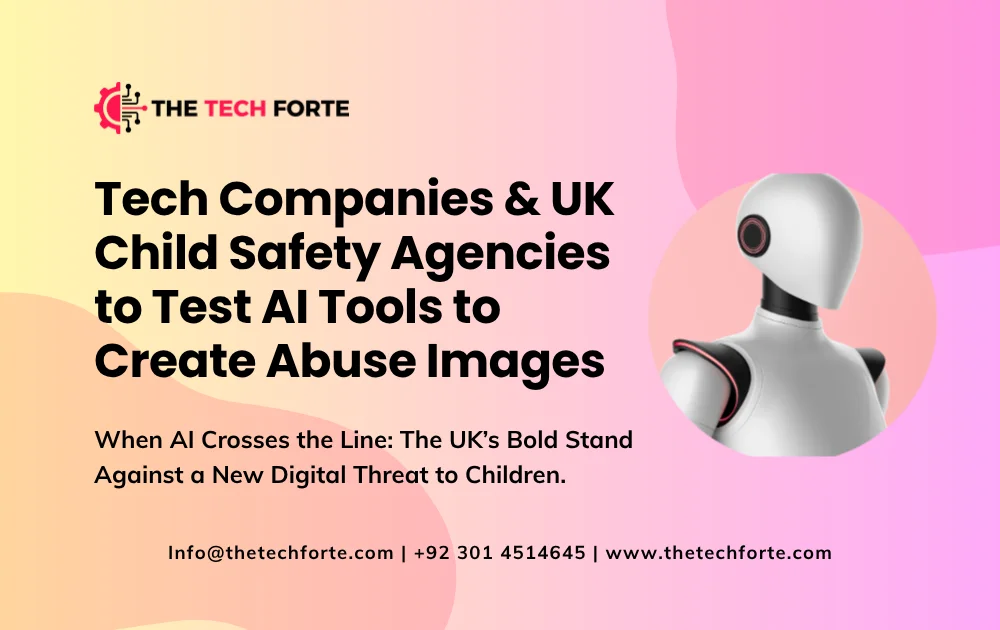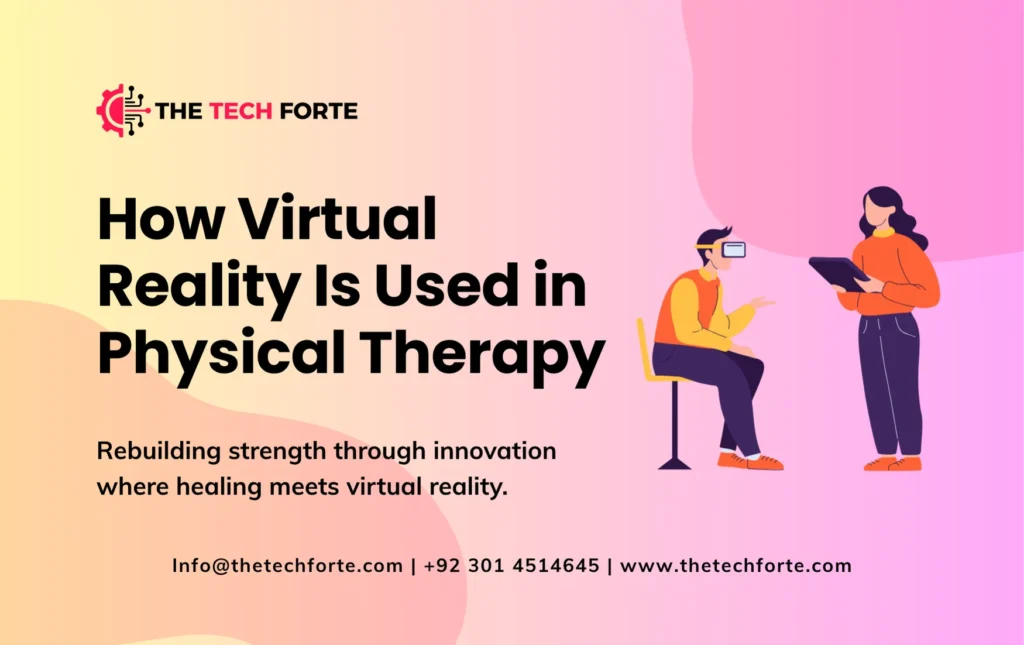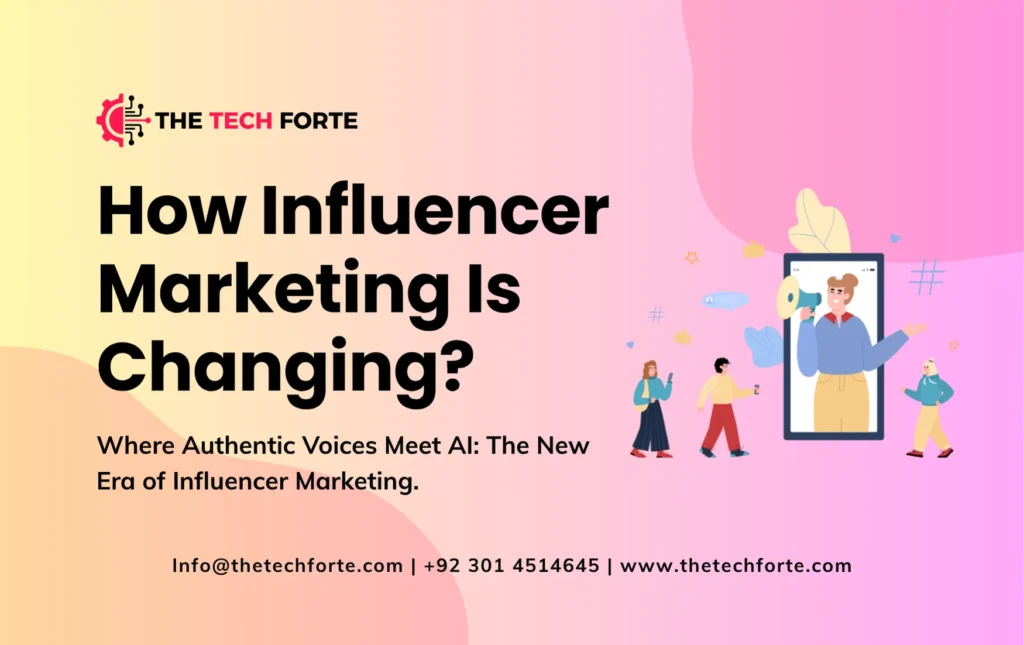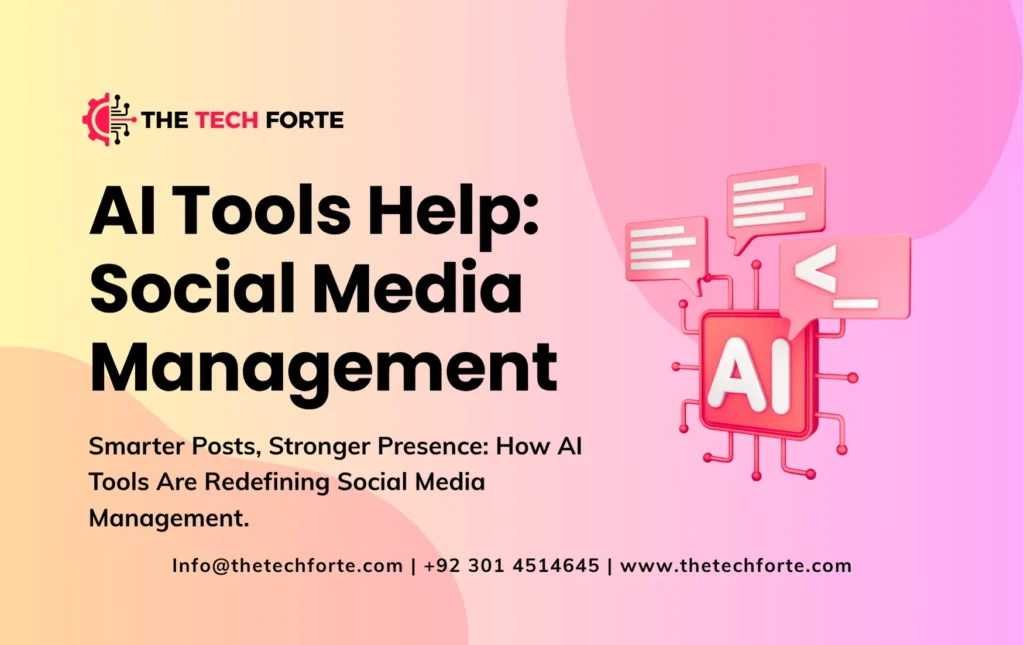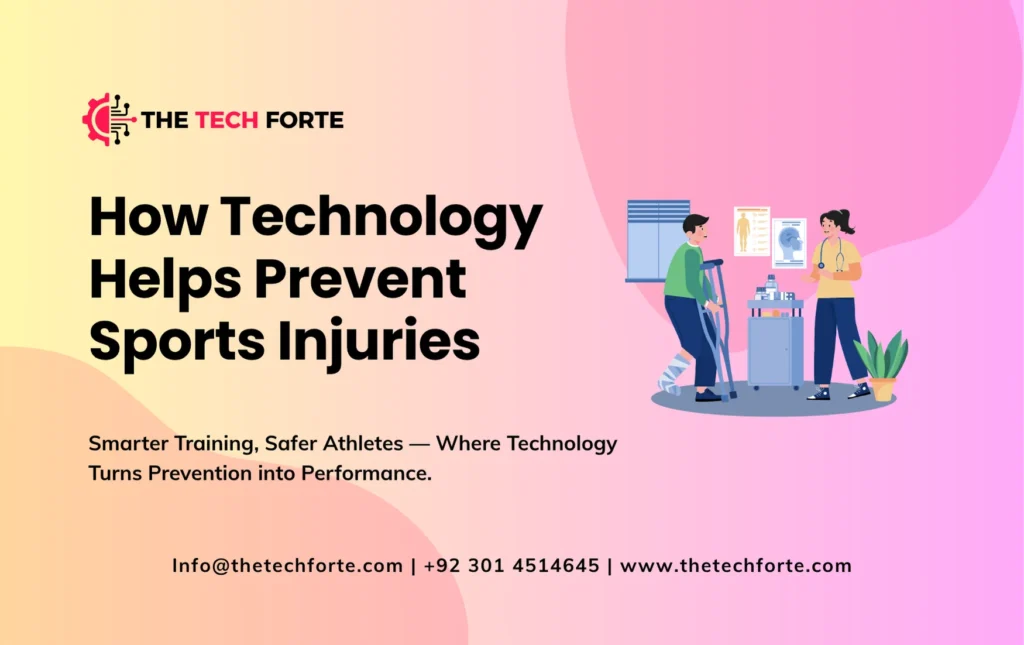Tech companies and UK child safety agencies to test AI tools’ ability to create abuse images

As the UK becomes the first country to criminalise the use of AI tools to generate child sexual abuse imagery, tech firms and child‑safety agencies are now preparing to test and audit those very tools. What does this mean in practice? How big is the risk of AI child abuse images? And what role will tech companies, regulators, and civil‑society groups play in countering the threat of AI‑generated child abuse images?
A Ground‑Breaking Legal Response
On 1 February 2025, the UK announced landmark legislation: the use of AI tools to create images of child sexual abuse will be a criminal offence. According to the government, these new offences will cover:
- the possession, creation, or distribution of AI tools designed to generate child sexual abuse material;
- The possession of so‑called “paedophile manuals” that instruct how to use AI for the sexual abuse of children.
- the operation of websites that facilitate the sharing of these images, including AI‑generated content;
The maximum penalties announced: up to five years’ imprisonment for the creation or distribution of such tools, and up to three years for possession of the manuals.
Why the urgency? The UK’s child‑safety watchdog, the Internet Watch Foundation (IWF), reported that AI‑generated child abuse imagery had risen nearly fivefold in 2024.
Home Secretary Yvette Cooper declared that “AI is putting child abuse on steroids.”
The legislation is enshrined in the forthcoming Crime and Policing Bill and positions the UK as a pioneer in tackling the dangers of undressed AI tools that strip, nude, or manipulate images of children without consent.
Understanding the Threat: AI‑Generated Child Abuse Images
a) What are we dealing with?
At its core, the threat centres on AI child abuse image content created or manipulated by generative AI to depict children in sexualised or explicit contexts. This can include:
- “Nudeification” of real child photographs, i.e., removing clothing or adding sexual content.
- Face‑swapping or overlaying children’s faces onto explicit images.
- The generation of previously non‑existent images of children being abused. While no direct victim may exist initially, the images still qualify as prohibited material.
- Use of these images to groom, blackmail, coerce, or extort children into further abuse, including live‑streaming.
b) The scale of the phenomenon
Data from IWF shows that over a 30‑day window in 2024, analysts found more than 3,500 AI‑generated child abuse images on a single dark‑web site.
In addition, a landmark criminal case in the UK resulted in an 18‑year sentence for a man who used AI to generate child sexual abuse imagery.
These facts underscore that predators exploit AI tools to generate images of child abuse at scale, often with precision and anonymity that previous methods lacked.
c) Why is this new and dangerous?
- The barrier to entry is lower: with generative models and off‑the‑shelf tools, perpetrators do not need to produce original video footage of abuse; they can generate plausible imagery synthetically.
- The anonymity is higher: AI tools can mask origin, use pseudonyms, and route through encrypted platforms.
- The volume is greater: With automation, large numbers of images may be produced and distributed quickly.
- The risk to children is amplified: Even if the child in the image has not been physically abused, the existence of realistic synthetic abuse imagery normalises exploitation and may facilitate grooming. Research warns that claims that synthetic CSAM may act as a “harm‑reduction” tool are misguided.
Hence, the UK government framed the crisis as a combination of AI tools + child vulnerability + criminal networks, which requires a new form of law, regulation, and testing.
Tech Companies Under a New Spotlight
a) Tools, platforms, and accountability
Generative AI tools are increasingly used for content creation images, videos, and text. But when used maliciously, they become vehicles for AI‑generated child abuse images.
In the UK’s new legal framework, not only are the producers and distributors of harmful content targeted, but also the tools themselves, the dangers of undressed AI tools which are engineered or adapted specifically to create exploitative images.
Tech companies must now face questions about:
- Model design & training data hygiene: Did the model include illicit data or be easily used for abuse?
- Tool accessibility: Are settings or defaults enabling misuse?
- Monitoring & reporting: What threshold triggers platform moderation or law‑enforcement referral?
- Forensic traceability: Can the origin of generated images be traced to a service or model version?
b) Industry readiness and responses
Major platforms and tool‑builders must adjust:
- Risk‑assessment frameworks will become standard for generative AI offerings, particularly those that might enable the creation of abusive imagery.
- One such initiative: The UK’s Home Office is working with child‑safety agencies and tech firms to test AI tools’ ability to generate abuse imagery as part of a pilot. This “red‑teaming” approach aims to reveal vulnerabilities.
- Compliance teams within tech firms must know that in the UK, possession or distribution of AI tools used for child sexual abuse images is now a crime.
c) The global ripple effect
Although the law is UK‑centric, its implications are global: many tech firms operate internationally. A model or tool usable anywhere might trigger legal risk in jurisdictions like the UK. Companies must therefore embed global compliance and child‑safety considerations from design through deployment.
A Joint Testing Framework: Tech Firms + UK Child‑Safety Agencies
a) Why test AI tools?
The UK is not simply banning tools; it recognises the complexity and is embracing a testing regime:
- Identify which generative AI models could be misused to produce AI child abuse images.
- Assess how easy it is for a predator to use “undressed” AI tools and pipelines.
- Evaluate controls, such as model prompts, restrictions, content filters, identity verification, and usage logs.
- Develop forensic capability to trace tool usage and assist law enforcement.
b) The planned testing process
Although full details are not yet public, the process is expected to follow:
- Tech firms and child‑safety regulators collaborate to simulate risk scenarios, prompt engineering, face‑swapping, and layering.
- Identification of weak links: Are moderators alerted? Is the model misused before detection?
- Implementation of mitigation steps: Improved filter, prompt censorship, refusal mode, and rate limits.
- Reporting outcomes: How many attempts succeeded? What elasticity remains for misuse?
These tests aim to close the gap between predators exploiting AI tools to generate images of child abuse and the ability of platforms to prevent, detect, and respond.
c) Resulting obligations for tech firms
After testing, tech firms will face enhanced obligations:
- Risk assessment and evidence of audit trails for any generative model made publicly accessible.
- Clear user terms and enforcement of misuse.
- Collaboration with regulators: providing logs, access, and data on misuse attempts.
- Rapid takedown and content‑sharing policies for AI‑generated CSAM and tools.
The Landscape for UK Child‑Safety Agencies
a) The role of the Internet Watch Foundation and others
Organizations like the IWF monitor, identify, and report content online, including AI‑generated child abuse images. The exponential rise in such images, nearly fivefold in 2024, is driving policy change.
Child safety agencies will now:
- Work directly with tech firms on testing and prevention.
- Expand digital forensics to include synthetic imagery origin tracing.
- Develop education and preventative programmes for children, parents, and educators about AI‑based abuse.
b) Government enforcement powers
Under the new law:
- Authorities will gain the power to unlock digital devices of suspected offenders.
- Websites that host or facilitate the sharing of AI‑generated CSAM or exploit “nudification” apps will face penalties of up to 10 years in prison.
- Risk assessments of generative AI tools may become mandatory, especially where children might access them.
c) Preventive public messaging
The dangers of undressed AI tools will be part of public‑education campaigns: children will be warned about how deepfakes and AI child abuse images can be produced and used for grooming.
Schools, social media platforms, and app stores will be required to flag risks associated with “nudification” features and face‑swap apps.
Risks, Loopholes & Unintended Consequences
a) Tool misclassification and generality of risk
One concern raised by civil society is that the legislation could inadvertently apply to general-purpose AI tools that are not specifically designed for abuse but could be misused. Hence, the dangers of undressed AI tools may widen not just to overt tools but to any system lacking sufficient safeguards.
b) Enforcement and detection challenges
- Detecting AI‑generated child abuse images remains technically challenging; models may generate content that is visually convincing yet not easily flagged by existing filters.
- The adversarial nature: predators can alter prompts, re‑encode images, and share on encrypted or dark‑web platforms.
- Law enforcement capacity: agencies may struggle to keep pace with the volume and speed of synthetic content generation.
c) Unintended chilling effects
If legislation is too broad, it risks stifling legitimate creative uses of AI tools or driving tools underground. Tech firms may restrict model access globally, not just in the UK, impacting innovation and startups.
Additionally, children’s and educators’ legitimate uses of AI (creative, educational) might be swept in if guardrails are unclear.
d) International jurisdiction issues
While the UK leads, offenders often operate globally. The cross‑border nature of the internet complicates enforcement: a tool hosted abroad can still be used by UK‑based predators. Coordination between jurisdictions is essential.
What Tech Companies Must Do: A Practical Checklist
- Audit Model Training Data: Ensure no CSAM or exploitative patterns were used.
- Embed Prompt Filters and Refusal Systems: Model should refuse or safe‑complete when asked to generate sexualised images of children.
- Rate‑Limit and Monitor Access: Guards for high‑risk usage scenarios (e.g., face swaps, nudification).
- Conduct Red‑Team Testing: Simulate a scenario where a predator attempts to create AI‑generated child abuse images and assess the system vulnerability.
- Support Forensic Traceability: Log access, versioning, and prompt history to assist investigations.
- Report Misuse: Establish channels to report attempts to produce CSAM or upload and distribute it.
- Collaborate with Regulators: Provide data, logs, and support for child‑safety agencies.
- Educate Users: Warn about the dangers of undressed AI tools and malicious misuse.
By doing so, companies can mitigate risk, align with new UK legislation, and demonstrate compliance to regulators.
What Parents, Educators & Civil Society Should Know
- Awareness matters: Children may not understand that seemingly “generated” images can be used for grooming, blackmail, or exploitation.
- Guard devices and accounts: Monitoring apps, strong passwords, and digital literacy help.
- Report suspicious behaviour: If a child is coerced with fake imagery or live‑streamed abuse, local law enforcement or agencies like the IWF must be informed.
- Advocate for safe tools: Contacting app stores and platforms to remove or restrict nudification tools and face‑swap libraries that can facilitate predators’ exploitation of AI tools to generate images of child abuse.
- Support victims: Even if the child in the image was not real, the trauma is real. Trust, therapy, and community support matter.
Global Implications: The UK’s Model and What It Signals
While this law is UK‑specific, its ripple effects are global:
- Other countries will likely follow suit; for instance, the EU may include similar provisions in its AI Act.
- Tech firms operating globally must adapt their tools to comply not just with UK law but with other jurisdictions.
- The testing framework (tech firms + child safety agencies) may become standard practice worldwide, closing the gap between generative AI models and real‑world harm.
- Investors, developers, and startups must factor in regulatory risk around generative AI, especially where synthetic abuse may be possible.
The Road Ahead: What Comes Next?
- Regulatory enforcement begins: As the Crime and Policing Bill passes into law, we’ll see cases of possession, distribution, or creation of AI‑child abuse tools being prosecuted.
- Standards and Certifications: Generative AI providers may adopt “child‑safe” certifications or audits showing they have mitigations in place.
- Tool‑specific bans: Certain nudification or face‑swap apps may be removed from app stores or banned outright as high‑risk.
- International treaties: The UK may push for global treaties on synthetic CSAM, prompting cross‑border enforcement.
- Innovations in detection: New forensic tools will emerge to trace AI‑generated content, detect manipulated images, and link them to tools or prompt histories.
- Focus on prevention and education: The balance will shift not only to detection and punishment, but to prevention, educating youth, securing devices, and reducing entry points for predators to exploit AI tools to generate images of child abuse.
Conclusion: Turning the Tide on AI‑Facilitated Child Abuse
The UK’s move to make the creation, possession, or distribution of AI tools for child sexual abuse images illegal is more than symbolism; it is recognition that the next wave of child‑safety threats will be synthetic, not just real.
Tech companies can no longer treat this as a niche or hypothetical. The era of AI‑generated child abuse images demands proactive testing, control, and transparency. Child‑safety agencies must adapt to a future where the dangers of undressed AI tools are real, rapidly scalable, and global.
For users, families, and society at large, vigilance is still required. New laws, new frameworks, and global cooperation are critical, but they are only part of the solution.
In effect, this is a wake‑up call: generative AI is powerful, but without accountability and design foresight, it can become a tool for unimaginable harm. The UK may lead the way, but the responsibility rests with the entire ecosystem: developers, governments, tech firms, and society.












